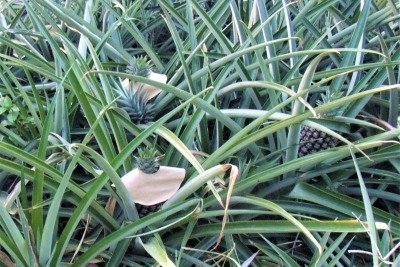CAM plants are those which photosynthesize through Crassulacean Acid Metabolism or CAM photosynthesis.
They are expectedly succulent plants. That is, they are fleshy plants having a low surface-to-volume ratio.

However, not all succulents belong to this plant type.
Many halophytes (plants adapted to salty soils) are succulents but are not CAM (Hopkins 1999; Moore et al. 2003).
These plants are adapted to dry, desert habitats.
They comprise up to about 20,000 species in about 40 families, equivalent to some 8% of all land plants.
They are found in the families Isoetaceae (lycophytes), Polypodiaceae (ferns), Vittariaceae (ferns), Zamiaceae (cycads), and Welwitschiaceae (Gnetales), as well as in numerous families in the angiosperms (Simpson 2010).
List of Families in the Angiosperms Having at Least One Cam Member: (From Simpson 2010)
In parentheses are the orders (ending ‘ales’) to which the respective families belong.
Monocots
- Agavaceae (Asparagales)
- Alismataceae (Alismatales)
- Araceae (Alismatales)
- Asphodelaceae (Asparagales)
- Bromeliaceae (Poales)
- Commelinaceae (Commelinales)
- Cyperaceae (Poales)
- Hydrocharitaceae (Alismatales)
- Orchidaceae (Asparagales)
- Ruscaceae (Asparagales)
Eudicots
- Aizoaceae (Caryophyllales)
- Apiaceae (Apiales)
- Apocynaceae (Gentianales)
- Asteraceae (Asterales)
- Cactaceae (Caryophyllales)
- Celastraceae (Rosids)
- Clusiaceae (Malpighiales)
- Convolvulaceae (Solanales)
- Crassulaceae (Saxifragales)
- Cucurbitaceae (Cucurbitales)
- Didiereaceae (Caryophyllales)
- Ebenaceae (Ericales)
- Euphorbiacea (Malpighiales)
- Geraniaceae (Geraniales)
- Gesneriaceae (Lamiales)
- Lamiaceae (Lamiales)
- Moringaceae (Brassicales)
- Oxalidaceae (Oxalidales)
- Passifloraceae (Malpighiales)
- Piperaceae (Piperales)
- Portulacaceae (Caryophyllales)
- Rubiaceae (Gentianales)
- Sapindaceae (Sapindales)
- Vitaceae (Vitales)
- Zygophyllaceae (Zygophyllales)
Except in Crassulaceae and Cactaceae, CAM species are not exclusive to most plant families.
There are families having members that are C3 plants and there are also those in which all C3, C4, and CAM patterns of photosynthesis are present (Hopkins 1999).
Examples of CAM Plants
Specific examples of CAM plants are the jade plant (Crassula argentea), Aeonium, Echeveria, Kalanchoe, and Sedum of the family Crassulaceae, pineapple (Ananas comosus), Spanish moss (Tillandsia usneoides), cacti, orchids, Agave, and wax plant (Hoya carnosa, family Apocynaceae). Both pineapple and Spanish moss are bromeliads or members of the family Bromeliaceae.
REFERENCES
- HOPKINS WG. 1999. Introduction to Plant Physiology. 2nd ed. New York, NY: John Wiley & Sons, Inc. p. 189-214.
- LLEWELLYN LE. 2000. Biopesticides: Marine organisms as sources of C4-weed-specific herbicides. The Royal Society of Chemistry. April 2000. Retrieved Aug. 3, 2013 from http://www.researchinformation.co.uk/pest/2000/B006323L.PDF.
- MOORE R, CLARK WD, VODOPICH DS. 2003. Botany. 2nd ed. Boston, Massachusetts: McGraw-Hill. p. 130-162.
- SIMPSON MG. 2010. Plant Systematics. 2nd ed. San Diego, CA, USA: Elsevier Inc. P. 535-539.
